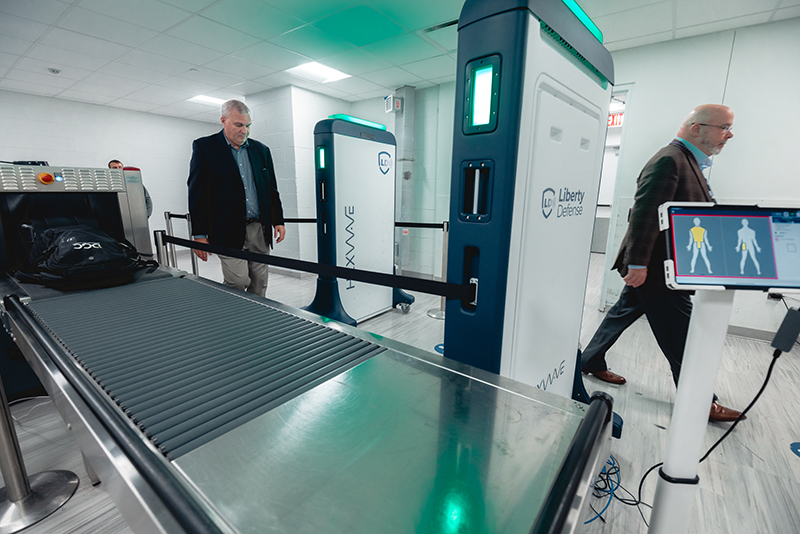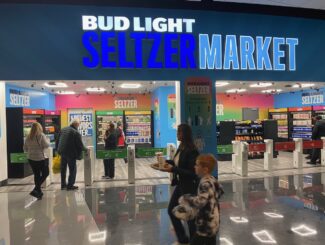
Company: Liberty Defense
Product: Hexwave
What it looks like: Two larger flat towers, set slightly off center to each other
How it works: People walk around the two towers in a single file “S” path; Devices can be kept in bags or pockets. Alerts cause a sound and light change on the panel; staffers also watch a tablet that shows video of where the alert object is on the person’s body.
Expertise: Hexwave has several executives with extensive experience in the security technology industry, including CEO Bill Frain, former senior vice president for L-3 Security & Detection Systems. The Hexwave technology is based on technology licensed from the Massachussetts Institute of Technology.
Profile: Since it is not yet in full commercial production of its systems, Liberty Defense may be missing out on the current surge in the stadium market for walk-through security scanning systems. But according to CEO Bill Frain, the company still sees a significant market for its Hexwave systems, especially in situations “where safety may trump speed.”

The Hexwave devices, which Frain said are now starting commercial production, are two large flat towers that people walk by in a sort of S-shaped path, so that the system can get a full 360-degree scan on bodies as they pass by. Over the past year, Liberty Defense has conducted trials of its systems with several airport security operations and also sold some of its first commercial systems for use at the Los Alamos National Library.
Previously, the Hexwave systems had been in trial at the University of Wisconsin as well as at the Camden Yards Sports Complex in Baltimore. However, Wisconsin is now using CEIA Opengate systems at its football stadium, and photos of Oriole Park at Camden Yards in 2023 showed traditional metal detectors in use.
Frain, who said the Hexwave systems can still scan more people per minute than traditional metal detectors, said the company is currently talking to potential stadium and convention center customers.
This post is part of our Market Report on Security Scanners. Click here to return to the start of the report.







